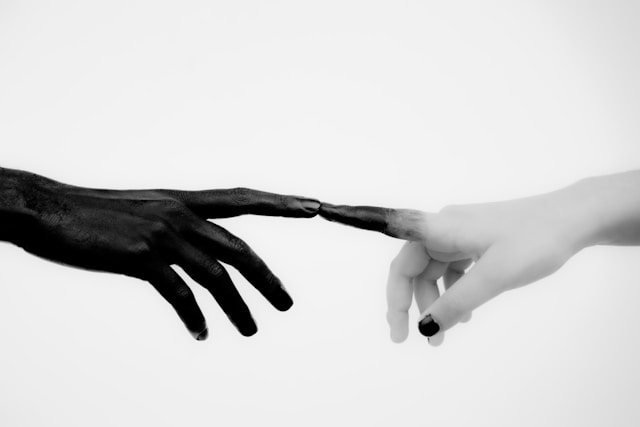
There are few science fiction stories that have a more powerful but subtle impact on Western culture than the classical story The Strange Case of Dr Jekyll and Mr Hyde. Perhaps, if anything, Frankenstein, which we covered earlier, might compare. It is a story that has snuck its way into our everyday vocabulary and constantly plays into our storytelling. How many Urban Fantasies, for instance, play with ideas of a kind innocent person who turns into a ruthless monster at the mercy of some irresistible force? From Teen Wolf to The Winter Soldier, the story of Dr Jekyll and Mr Hyde sinks into countless fictional forms. I’ve even co-opted several ideas in my own current Gothic Horror book.
Why does Jekyll and Hyde resonate so strongly with us? In Romans 7:15 Paul laments “For I want to do what is right, but I don’t do it. Instead, I do what I hate.” Just like Paul, we are constantly torn between the desire to do good, and the evil that we do not want to do, but do. This is scripture’s depiction of the sin nature. I think to answer this question, we can take a closer look at this classic.
Violence Where it Doesn’t Belong.
Three years after Robert Luis Stevenson published The Strange Case of Dr Jekyll and Mr Hyde, eleven women were murdered on the streets of London. The Whitechapel murders as they are now known, were considered to be the work of a single, unknown serial killer known as Jack the Ripper.
During the same time as the brutal murders, women were dying of “phossy jaw” a disease caused by the phosphorous in the plants where they worked for a pittance. Jewish immigrants were fleeing oppression in Russia and moving to the impoverished areas in London. Poverty and alcohol dependence were as rampant as overcrowding and homelessness, resulting in many women getting jobs in the only place they could, as sex workers.
None of these ills were considered as the threat they were, though they cost more lives than Jack the Ripper’s knife. Murder was not uncommon. The second season of the historical podcast “Unobscured” sets the tone very well for these murders.
The Strange Case of Dr Jekyll and Mr. Hyde was written, essentially, in the same setting and presciently depicts the fear and horror of the murders. In the opening, we see a young girl being trampled by a hideous character identified as Mr. Hyde. The narrator, a lawyer named Utterson, and his friend Lanyon, speak about the incident. However, it’s not long afterward that Utterson identifies the name again. A close friend and client, Dr Jekyll, seems to be transferring all his assets to an individual named Mr. Hyde.
About a year later Hyde reappears, beating to death a man named Sir Danvers Carew, another of Utterson’s clients and a member of parliament. Despite Utterson’s attempts to lead the police to Hyde’s room behind Jekyll’s home, they are unable to find him. Jekyll insists he will have nothing more to do with the man.
The Revelation of Man’s Duel Nature.
When Jekyll becomes agitated, and later disappears, Lanyon and Utterson seek to intervene. Lanyon dies, seemingly from shock, and leaves a letter to Utterson. Utterson then, on the behest of Jekyll’s servant, breaks into the room behind Jekyll’s home where Hyde had once lived. He finds a laboratory, and inside, Hyde is lying dead in Jekyll’s clothing.
The letter a testimony of both Lanyon and Jekyll, tells of Jekyll’s experiments. He wanted to separate the good and the evil natures of man. When he was able to do so, he quickly became addicted to the freedom that came with Hyde’s careless nature.
Eventually, the dependence on the potion leaves Jekyll unable to control the change, and Hyde is able to emerge whenever he likes and do whatever he pleases. Afraid of being hung for murder, Jekyll turns back to a potion in an attempt to force Hyde to stay dormant. He is unsuccessful, however, and Hyde emerges for one last time. A permanent change.
It is at this point that Utterson finds the dead monster in his former friend’s home.

What I don’t want to do I do.
Many Victorian horror stories focus on the dual nature of the hidden sin nature of man. They were, in many ways, not far removed from the hyper-religious terrors of the Reformation, the Catholic inquisitions, and the Puritans. Witch hunts and burning at the stake were not a very distant memory. For many of them, it would have been the generation of their great-grandparents, and maybe even their grandparents.
After around 200 years, they may not have been willing to carry on the torch and pitchfork lifestyle of previous generations. 200 years of “modernity” had diluted the fervent fear of the supernatural and the occult in some ways, but strengthened it in others. It was near the end of the Victorian era that the spiritualist movement started moving the public perspective of the supernatural from something of danger and demonism to something that had the potential for “good”. They were still terrified of the lurking evil in us all., though. Their lives depended on civility and politeness like many of ours do today.
Even now, with police and emergency rooms, we know what may happen if one individual decides they will not abide by society’s rules. Mass shootings, religious Jihads, and political extremists remind us that, for all our advancements, we are still dependent on a fragile moral barrier to protect us.
With most Victorian era horror, this tension was the focus of their fear. Books such as The Picture of Dorien Grey, Frankenstein, and The Invisible Man highlight the duality of man. They ruminate on where evil begins, how inherent it is to our nature, and how much power we have to fight it.
Duality is a very worldly concept, but it has roots in scripture. While we might call our “evil nature” the “id” or “primal man” on a purely humanist perspective, scripture calls this the “sin nature” or “flesh”.
Scripture offers us not a duality, but a trinitarian nature. Our bodies and minds are contaminated with the death and rot of a spirit cut off from God. This is our “sin nature”. It can only be defeated like a zombie out of pop culture. We need to put it to rest and bury it where the rot can no longer reach us.
Who Then Shall Save Me
Paul ends his grief-filled rage against his own sin by crying out, “Who will save me from this body of death.”
One of the most influential books on my Christian walk has been Watchman Nee’s book, The Normal Christian Life. In the book, Nee emphasizes the role of identity in our behavior. He explains that the only way to end the battle between our sin nature and the moral law of God is to put ourselves to death. A dead man, after all, can do nothing.
Scripture joins with Nee, encouraging us to “Daily pick up our cross” (Luke 9:23), and “go to Christ outside the camp” (Hebrews 13:13). In fact, scripture is clear that we are already dead, and that the sin that we suffer from is a form of spreading rot. (Colossians 2:13)
One of the most horrific deaths known in history was carried out by Romans in incredibly rare cases. The condemned would be attached, arm to arm, leg to leg, to a dead body. As the corpse rotted, it would infect the condemned, eventually killing him. This is the imagery scripture calls up when speaking about our sin nature.
By crucifying and burying our “flesh” with Christ, as we are called to in Galatians 2:20, we allow Christ’s life to revive and renew us. Christ who Colossians 3:3-4 implores us to hide ourselves with Christ in God, so we will be joined with Him in death and life. Our sin nature died with Him, so we can be raised up with him.
For the cruel and wicked Mr. Hyde to die, timid and scared Dr Jekyll had to die with him. He was right to fear that he would be hung for the murder committed by his unfettered sin nature. He was fettered to the evil man.
Like Dr Jekyll, we must surrender ourselves to die with our sin nature by letting it be nailed to the cross with Christ. Unlike Jekyll, however, by uniting ourselves with Christ in His death, we can live again with him. We can live free of our Mr. Hyde.
Join me this Monday, Dec 2, 2024, for an Illuminated Thoughts article on the nature of Truth.













